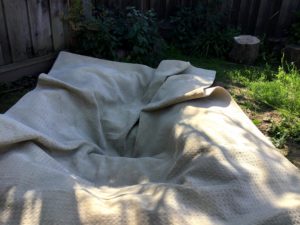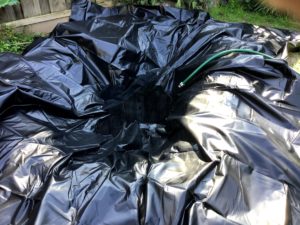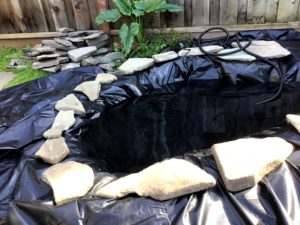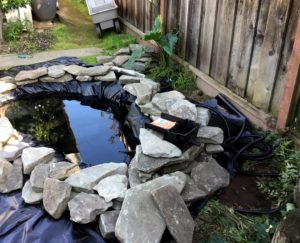Ambition mode is one of the gameplay modes in Dynasty Warriors 8 (and it’s spinoffs). Most things in the second part of ambition mode will not be covered (the stuff after finishing the tongquetai which I believe was added in the Xtreme Legends expansion). You can find the game here.
Basics:
Here are basic things you should know if you’re playing ambition mode.
Starting the Game:
When you start a new game in ambition mode, it’ll prompt you to choose a character. It doesn’t really matter which character you choose but you should probably choose a character you like (and preferably has higher stats but you can still play on beginner mode) since you’ll be stuck with them for a bit.
Tongquetai: The main goal of the first part of ambition mode is to build the tongquetai and welcome the emperor to your side. To build the tongquetai you will need to upgrade the merchant, barracks, teahouse, and blacksmith all to level 50, recruit allies (400?), and earn fame (5000). Upgrading your facilities often takes the longest so prioritize upgrading them (more on that later).
Allies: You earn allies by defeating them in battles. When you defeat an officer they’ll join you (with the exception of mock battles but those aren’t unlocked until after completing the tongquetai) if you haven’t reached your maximum number of officers yet. When you recruit allies you’ll be able to unlock new facilities. Playable officers who are your allies can be played if you switch characters.
Fame: Fame is earned in unconventional battles (it might be earned in other ways too, I don’t know), by completing missions such as defeating an assassin or rescuing handmaidens. If you pause the battle there should be a tab for missions. The amount of fame you have will determine the number of allies you can have. The maximum amount of fame your allowed depends on the facilities you have (excess fame is discarded).
Materials: Facility materials upgrade facilities and weapon materials can be used at the blacksmith (more on that in facilities). To upgrade facilities, press the touch pad and go to camp management. Weapon materials and facility materials can be traded at the merchant at a rate of 1:2 and 1:1 after maxing out the merchant.
Weapons: (Most of this information applies generally to all of the game, not just ambition mode.) Weapons are an integral part of the game. You can earn more weapons by defeating officers and picking up the dropped weapon (a brownish box or for playable officers, their weapon). In ambition mode, you can change your officer’s weapon by going into officer info. In battle, weapons can be switched by pressing the L1 button. Some weapons possess skills that’ll have benefits you battle (like health gauge recovery when fighting or a defense increase). It’s recommended at least one of the weapons you use is your officer’s favorite weapon so you can use EX attacks. You can have a maximum of 1200 weapons. To collect more weapons you can sell weapons at the blacksmith in ambition mode and at camps in story mode. (I’ve found that selling weapons can earn you a sizable amount of gold.)
Animals: Officers will already have a default animal (e.gadow Runner for Cao Cao) that they ride. You can get animals in battle, from the barracks, winning consecutive battles (more on that later), completing the tongquetai, and buying them from the merchant. Some animals can be rode (horses, bears, elephants etc.) while others are companions (tigers, falcons, etc.).
Gold: Gold is the in-game currency. Gold is used to buy weapons, animals, food from the teahouse, animal feed, and deploy troops. Gold can also be earned by selling weapons and animals and battles.
Bodyguards:
In the game, you can have a maximum of three bodyguards. Each bodyguard has a special skill that you can use once per battle. There is a maximum fee (30 to begin) you can have for your character that is increased through leadership EXP. Leadership EXP is earned by sending your bodyguards on tasks. Playable characters will have a larger fee than generic officers (31-33 versus 1-14).
Bonds: Your bond with an officer increases when you have them as a bodyguard (bonds might increase in other ways as well, I don’t know). Officers have bonds with both male and female officers that must be leveled up independently. You can unlock affection lines and earn gems by increasing your bonds with a character. When you reach the maximum bond level your bodyguards will will have a new skill they can use. You will also unlock the all of a playable officer’s ambition mode lines (accessed through the gallery) by maxing out their bonds with both male and female officers.
Battles:
Gate: Go to the gate to start battles in ambition mode. When you talk to the gatekeeper you’ll get to choose the battle difficulty, battle type and battleground. The in-game tutorial will show you the battles but they are listed below:
Great Battles: These battles are great for earning allies.
Unconventional Battles: These battles prompt you to complete missions which will earn you fame. These missions also earn you time which is helpful if doing consecutive battles (more on that later).
Skirmishes: Skirmishes are short battles that can be done quickly and are good for earning materials. You can still earn fame and recruit allies through skirmishes but on a smaller scale.
Duels: Duels are battles where playable officers will appear. Duels will appear after you have done between 2-4 consecutive battles.
Mock Battles: Mock battles are unlocked after completing the tongquetai. These battles will have you fight against your own officers. Your officers won’t drop weapons and these battles can be used to unlock conversation lines.
In ambition mode, battles have a time limit of 7 minutes. You can earn more time by defeating officers (30 seconds), for every 50 KOs (30 seconds), completing missions (2 minutes), and using the gather supplies bodyguard skill. You can have a maximum of fifteen minutes in battles.
Consecutive Battles: You can do multiple battles in a row with out returning to camp. When you do so your health gauge is not returned to 100%, your time limit is not increased and the difficulty increases. Doing multiple consecutive battles can earn special animals and weapons (see miscellaneous).
Facilities:
Facilities will appear after you reach a certain number of allies. You’ll start with the blacksmith (and gate) and build the rest later.
Supervisors: Supervisors really don’t do much (with the exception of the training ground and farmer’s supervisors). If you speak to a supervisor they will say something about the facility they’re at. You need to have a supervisor at the training ground or it’s useless and it’s good to have one for the farmer since the supervisor will occasionally give materials (facility and weapon materials). Note that there is a maximum number of supervisors you can have at facilities and you may have to move them around.
Here is a list of the facilities and what they do:
Blacksmith: At the blacksmith you can sell, buy and do other things with weapons. You can reforge weapons to make stronger weapons as you increase the blacksmith’s level (at level one you’ll only be able to buy and sell). Selling weapons provides gold and can help fund barracks trips.
Teahouse: The teahouse provides food which has a multitude of effects. When buy food you’re officer will have a short-term advantage in battle such as a health gauge increase to quicker musou gauge recovery. More food options will appear as the level increases.
Barracks: The barracks allows you to deploy troops. You can send troops (up to 10,000 gold’s worth of troops) to a single province. When you come back from battle check back at the barracks and you’ll receive rewards. Rewards include animals, allies, weapon and facility materials, and weapons. You’ll still receive rewards after searching the area 100%.
Farmer: The farmer will provide gold for you after you complete a battle. I recommend having a supervisor here since they’ll occasionally provide materials (speak to the supervisor, they will occasionally say something other than their normal line). Speaking to the farmer will give you gold.
Merchant: The merchant allows you to exchange, sell and buy objects. You can trade one weapon material for two facility materials until your merchant reaches level 50. It’s recommended you only upgrade your merchant to level 50 after finishing the other facilities for the tongquetai. Discounts and the available items will increase as you upgrade the merchant.
Training Ground: The training ground requires a supervisor for it to do anything useful. If you don’t have a supervisor there, you might not notice it’s there (I didn’t) too. The supervisor will gain EXP as you fight battles and will level up over time. You can assign characters you dislike playing as to the training ground to level them up. The amount of EXP gained will increase as the training ground’s level increases.
Stable: The stables house different animals that can be fed to reap rewards. Rewards include, animals, weapons, and materials. Different animals like different types of feed. Feed costs between 100-1000 gold. More feed becomes available as you level up.
Academy: At the academy you can buy EXP, health, attack and defense boosts. These are permanent and can be beneficial for leveling up characters you hate playing as but want at at high level. More items become available as you increase the level.
Miscellaneous:
Completing 30, 60, 90 and 100 consecutive battles:
Shadow Runner, Hex Mark, Red Hare and War Elephant are earned by winning consecutive battles. Shadow Runner is earned by completing 30 consecutive battles, Hex Mark is completed by completing 60 consecutive battles or 30 consecutive battles and another 30 consecutive battles. Red Hare is earned by completing 30 consecutive battles three times or 90 consecutive battles (or 60 consecutive and another 30). I have not earned the War Elephant but it is earned by completing 100 consecutive battles.
To complete consecutive battles, I recommend choosing one of your high level officers and playing on beginner mode. The game difficulty increases as you win consecutive battles so playing even on easy mode can be difficult. I recommend playing unconventional battles to earn time (you earn two minutes from each mission) if you’re low on time.
Completing five consecutive battles will also earn you special weapons. Note that you will only get the animals if you haven’t reached the maximum animal quantity. I recommend selling some animals at the merchant before leaving for battle. You can release animals into the wild during battle, so I also recommend around battle 29 or 99 to release one or two animals.
That’s all for my blog post! Thanks for reading!






